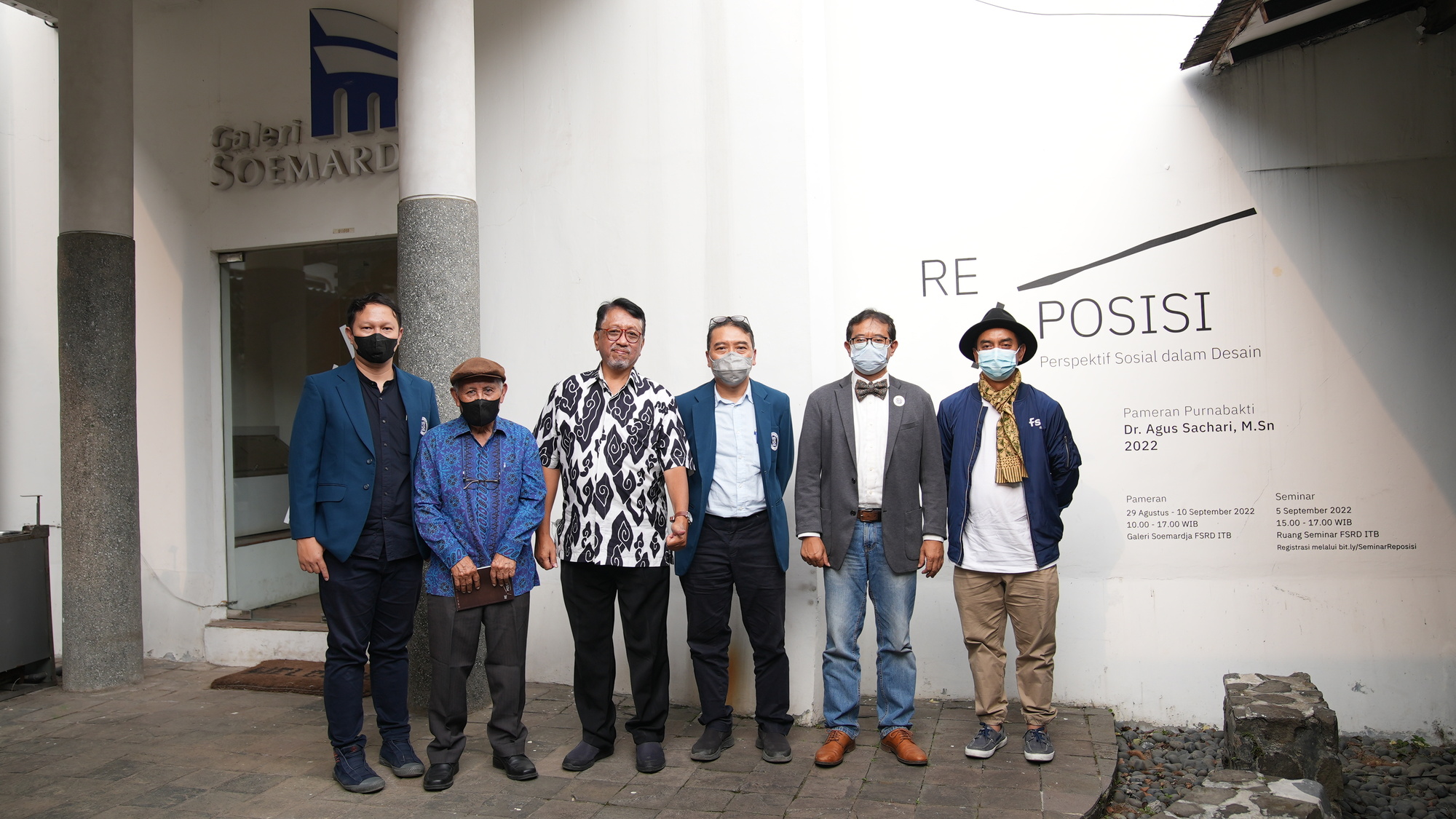Agus Sachari’s Journey in “Reposisi” Exhibition
Perspektif Sosial dalam Desain (The Social Perspective in Design) Exhibition was held from August 29, 2022, to September 10, 2022, at the Soemardja Gallery, FSRD ITB. Taking Reposisi (Reposition) as the title, this exhibition is inspired by Agus Sachari’s journey as a designer, researcher, and design educator. He always strives to expand his understanding and design actions to various spheres of social problems, and carefully brings these novelties to remain realistic to be executed in a concrete way. His works from 1980 to 2016 experienced various changes as a response to the social, cultural, and political dynamics that occur in Indonesia. Through his designs, improvements will be made, particularly in resolving various social inequalities in different eras. As part of the exhibition, a seminar was also held on September 5, 2022, in the Seminar Room, CAD Building.
Agus Sachari is a prominent figure and bears the title of the Father of Transformation Discourse and Indonesian Design Sociology. He can be equated with Carl Aubock, Victor Papanek, John Heskett, Bryan Lawson, John A. Walker, Kenji Ekuan, Peter Dormer, Peny Sparke, Victor Margolin, and others in the “hall of fame” of world design thinkers. He contributes to the development of design science by raising designs to the level of understanding the urgency of “design conscious”. This is in line with the noble ideals of his predecessors such as Prof. Imam Buchori Zainuddin in the Industrial Product Design Research Group FSRD ITB. Even, the late Dudy Wiyancoko dubbed his ‘fanatic followers’ as “The Sacharians”. Moreover, for about 13 years, He also has been carrying out his duties as the Promotor of the Doctor of Arts and Design ITB.
Agus Sachari produced countless works with various themes. This exhibition is a blessing and challenge since works must be sorted by year of manufacture. He worked extra in finding data for his works and remembering how the work was created. All data of his work files such as descriptions, prototypes, and even details of the year of manufacture must be confirmed correctly. Some of the works displayed at the exhibition are original prototypes he made many years ago, and the other works have been remade.
Through this exhibition, he invites us to explore design works juxtaposed with his writings in several periods and to reflect on his flexibility and adaptive ability in responding to social dynamics and political conditions in this country. From this, we can understand that social design lies not only in understanding which is entangled in various methodological stages that invite us to race directly to fast solutions. It instead invites us to always look for moments to agilely maneuver, slow down and reflect, and achieve results for the greater good.


